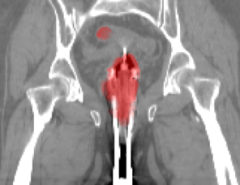Authors: Ruofan Wu, Guanhua Fang, Qiying Pan, Mingyang Zhang, Tengfei Liu, Weiqiang Wang, Wenbiao Zhao
Published on: February 06, 2024
Impact Score: 8.35
Arxiv code: Arxiv:2402.04033
Summary
- What is new: This research introduces an analysis of the vulnerabilities in graph neural models through edge reconstruction attacks, primarily focusing on the COSERA method. It’s one of the first to quantitatively assess the risk of such attacks on sparse graphs and evaluate the efficacy of noisy aggregation mechanisms for privacy preservation.
- Why this is important: The paper addresses security concerns in graph representation learning, particularly the risk of sensitive information leakage through structural vulnerabilities to edge reconstruction attacks.
- What the research proposes: The study proposes the investigation of COSERA attacks on sparse graphs and the testing of noisy aggregation (NAG) methods as a defense mechanism to protect against these privacy vulnerabilities.
- Results: It was found that COSERA can effectively reconstruct sparse graphs, especially Erdos Renyi graphs with increasing size. However, sparsity significantly impacts the success of these attacks. Meanwhile, the NAG mechanism shows promise in mitigating the risk by offering a trade-off between data utility and privacy.
Technical Details
Technological frameworks used: nan
Models used: Graph Neural Models, Erdos Renyi graphs, Stochastic Block Models
Data used: Sparse graphical data with independent random features
Potential Impact
Companies focusing on graph-based data analysis, social network platforms, and security services might directly benefit from or need to adapt to the insights provided in this research regarding privacy protection mechanisms.
Want to implement this idea in a business?
We have generated a startup concept here: SecureGraphAI.


Leave a Reply